3 Tips for Using Direct Heat Without Compromising Your Natural Hair
Within the natural hair community, when we think of thermal reconditioning, also known as heat damage, we’re likely thinking of damage from flat ironing or blow drying incorrectly or from using at high temperatures. However, all heat is not created equal.
Direct heat is probably the most discussed type of heat damage. Direct heat is considered any type of hair styling tool that involves directly touching or coming in contact with the hair. Examples include: flat irons, blow dryers (no diffuser attachment), curling iron, hot comb, and a curling wand. This blog post will offer three professional tips for using direct heat without compromising your natural hair.
Tip #1: Cleanse Your Hair Properly & Thoroughly
Before heat styling, it’s imperative that you cleanse your hair to properly remove environmental debris and product buildup from the scalp and hair. It’s also important to use the appropriate shampoo, given how dirty your hair is. We suggest either using a clarifying or all purpose shampoo.
After you have cleansed your hair with the appropriate shampoo, then proceed to conditioner. Once your hair is conditioned, thoroughly detangle your hair, then start the prep and prime process for your blow out or press.
Visit this blog post for our recommended prep and prime process.
Tip #2: Learn How To Properly Use Heat Styling Tools
As we always tend to say, tools are only as good as its user. Just like any other tool, we must learn how to properly use them in order to achieve best results.
When using handheld blow dryers, if you have properly prepped and primed your hair, you should have enough slip in order to blow out your hair. Alternatively, if you decide to use irons, we do not suggest using them at high temperatures. We would suggest safely starting at 390 °F.
Tip #3: Do Not Apply Heat To Your Hair Daily
We do not recommend applying heat to your daily, as this is a definite way to increase your chances of getting heat damage.
To preserve your blowout or press, you can either wrap your hair nightly with a scarf or bantu knot it to prevent tangling and keep the hair stretched and organized. When wrapping your hair at night, you can use a serum for extra lubrication and slip.
“PRO TIP: Inside of our digital course community, The SeeSomeCurls Visual Library, there is a brand new video tutorial for how to properly set and take down bantu knots.”
Want to learn more tips for how to properly use direct heat? We cover fundamental hair care knowledge and more in our digital course community—The SeeSomeCurls Visual Library.
Our 1.2K+ course community of tight curl + naturals are shaving more than 50% of time off their wash day, being showered left and right with hair compliments, and are receiving direct support of a very encouraging community of tight curlies + naturals who have been exactly where you are.




